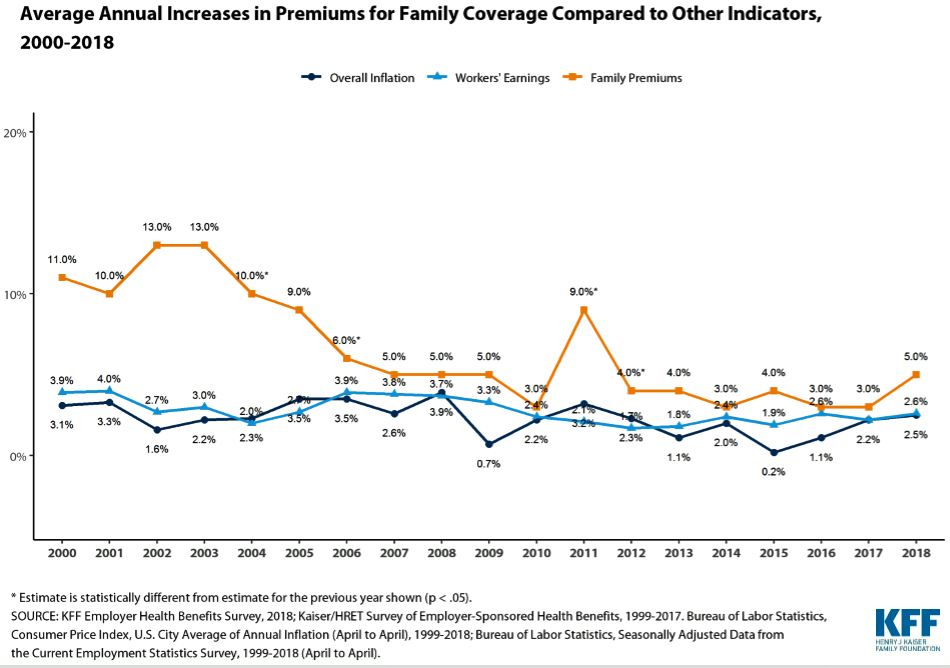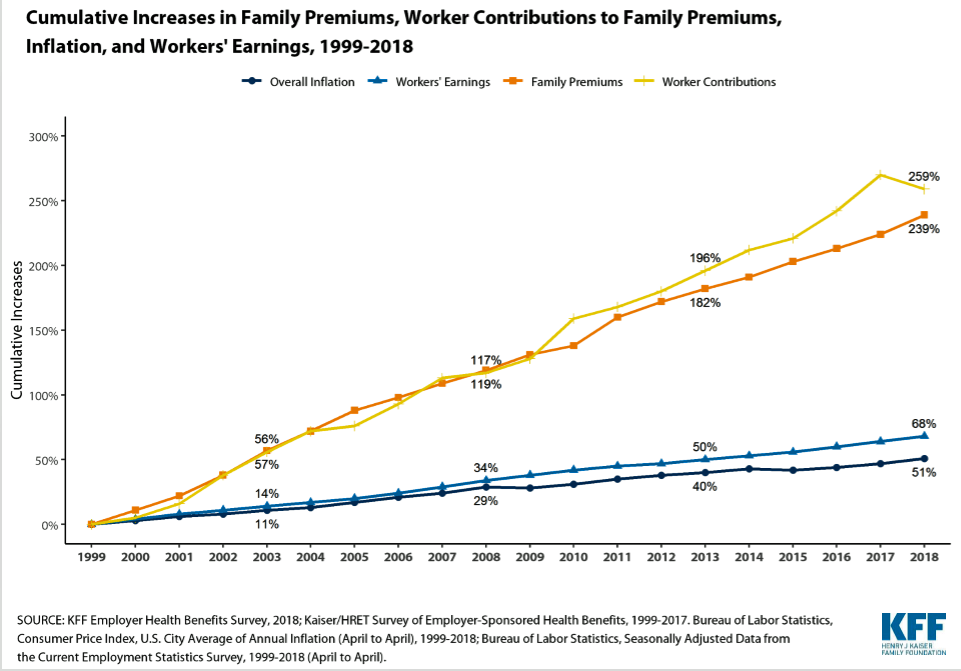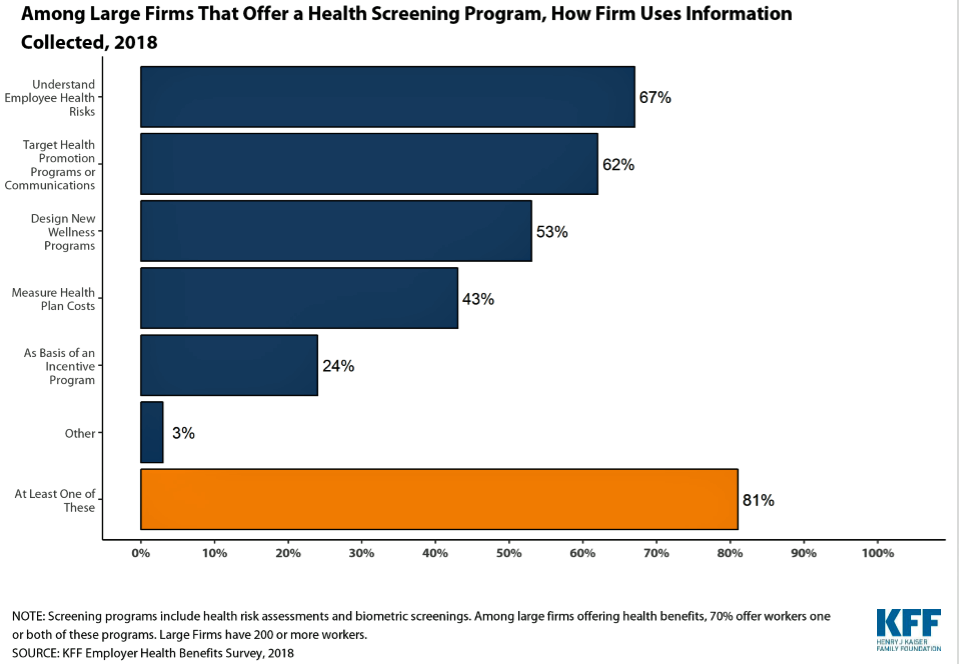
Family premiums for health insurance received at the workplace grew 5% in 2018: to $19,616, according to the 2018 KFF Employer Health Benefits Survey released today by the Kaiser Family Foundation (KFF).

These two trends combine for a 212% increase in workers’ deductibles in the past decade. This is about eight times the growth of workers’ wages in the U.S. in the same period.
Thus, the main takeaway from the study, KFF President and CEO Drew Altman noted, is that rising health care costs absolutely remain a burden for employers — but a bigger problem for workers in America.
Given that wages in the U.S. are increasing for some workers, “What happens with wages can be as important to closing the gap between cost sharing and wages as what happens with cost sharing itself,” Altman said.
Health benefits as a share of compensation have been stable for a decade. From the employer’s point of view, this doesn’t suggest a new urgency or crisis in employer healthcare costs, but more an “ongoing chronic headache,” Altman described.
For the worker, though, rising healthcare costs are a burden from two sources: the growing premium, and the growing deductible.
Workers now pay an average of $5,500 a year toward the healthcare premium, a “dent” in take-home pay. This premium share significantly varies by size of firm and occupation.
The rise of the premium, though, can be crowding out the opportunity for companies to increase workers’ wages, many of (us) economists believe.
Over the past decade the share of workers in plans with annual deductibles has grown from 59% in 2008 to 85% in 2018.
The biggest cost problem is for people who are sick, Altman asserted: this is, as he observed, “the opposite of how a health system should work.”
 Health Populi’s Hot Points: As workers bear a greater financial risk for covering their and their families’ healthcare costs, how to bend that cost curve downward? employers ask.
Health Populi’s Hot Points: As workers bear a greater financial risk for covering their and their families’ healthcare costs, how to bend that cost curve downward? employers ask.
Two approaches quantified in this year’s KFF survey are the use of lower-cost settings, such as retail clinics and telehealth, as well as workers generating health data shared via mobile apps and wearable technology. An example of this is the employer-aimed Fitbit program, Fitbit Care, aiming to enable covered employees to change health behaviors and ultimately move the needle on costs and better health.
Three in four large firms covers telemedicine in 2018, KFF found. This coverage line item is fast-growing, from the 27% low mark in 2015 of large companies covering telemedicine to 63% in 2017 and 74% in 2018.
While this is an impressive number in terms of companies offering remote health options to workers, few workers actually take advantage of this benefit, KFF found in a separate analysis.
Adoption of wearable tech and mobile health apps in companies’ wellness programs is expanding. Larger firms are more likely to collect wearable tech information generated by workers. Eight in ten employers that offer a health screening program use the data collected in some way, the third chart shows. Most commonly, 67% of companies use the workers’ health data to understand employee health risks, and 62% to target health promotion programs and personalized messaging to nudge workers into healthier behaviors.
As health-covered workers continue to face growing healthcare costs for premiums and deductibles, along with increased demands for sharing personal information as part of wellness programs, the worker is also the voter.
That voter in America has prioritized pre-existing conditions, the cost of prescription drugs, and surprise medical bills as political priorities — across party ID, as I’ve noted here in Health Populi. KFF’s 2018 annual study on employer-sponsored healthcare costs is particularly timely given the approaching mid-term elections where voters-as-health-consumers will go to the polls with healthcare and costs top-of-mind.
The post As Workers’ Healthcare Costs Increase, Employers Look to Telehealth and Wearable Tech to Manage Cost & Health Risks appeared first on HealthPopuli.com.
As Workers’ Healthcare Costs Increase, Employers Look to Telehealth and Wearable Tech to Manage Cost & Health Risks posted first on http://dentistfortworth.blogspot.com
No comments:
Post a Comment